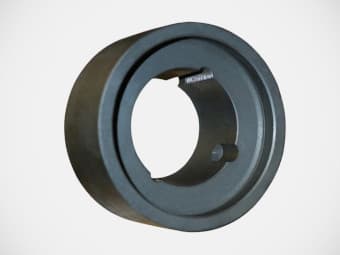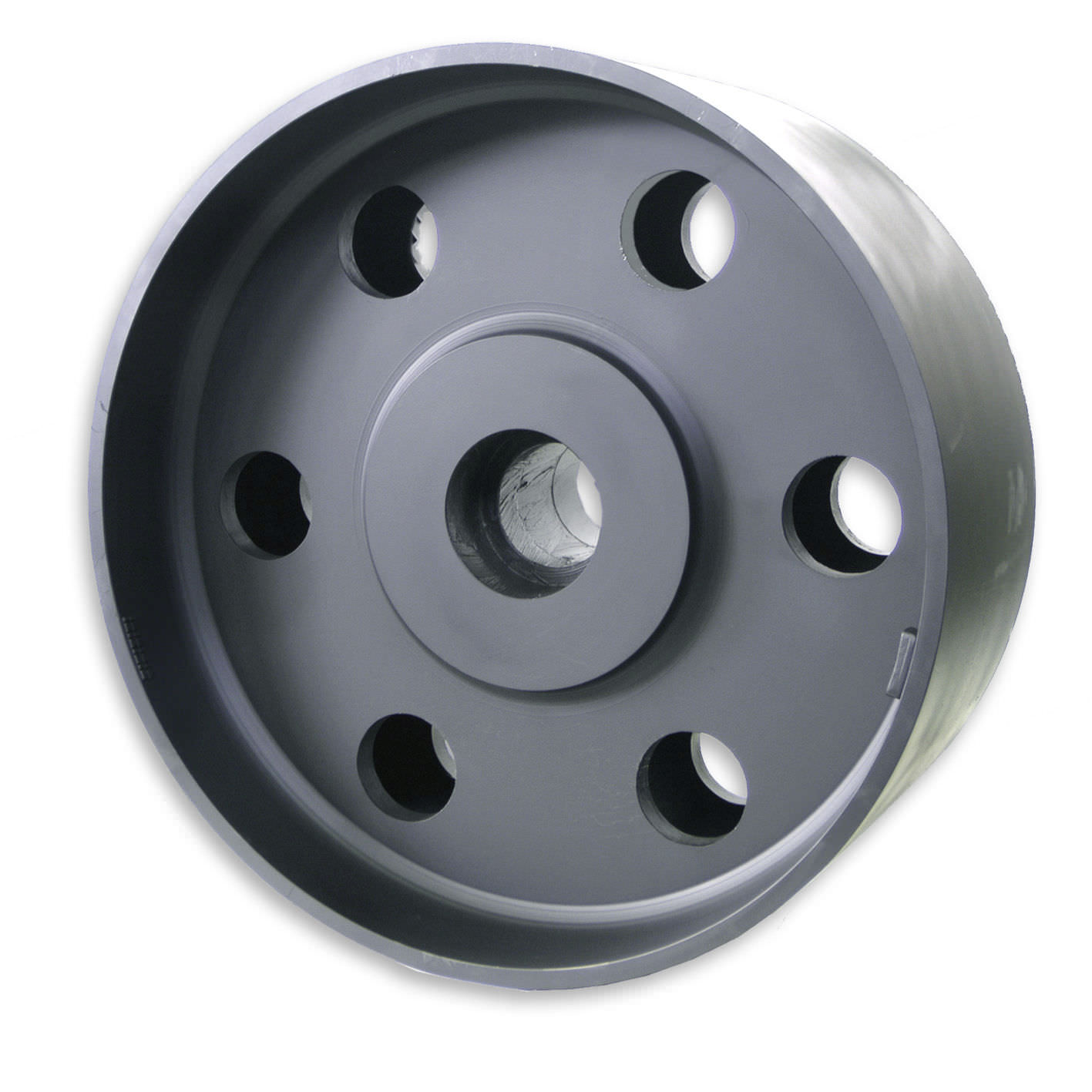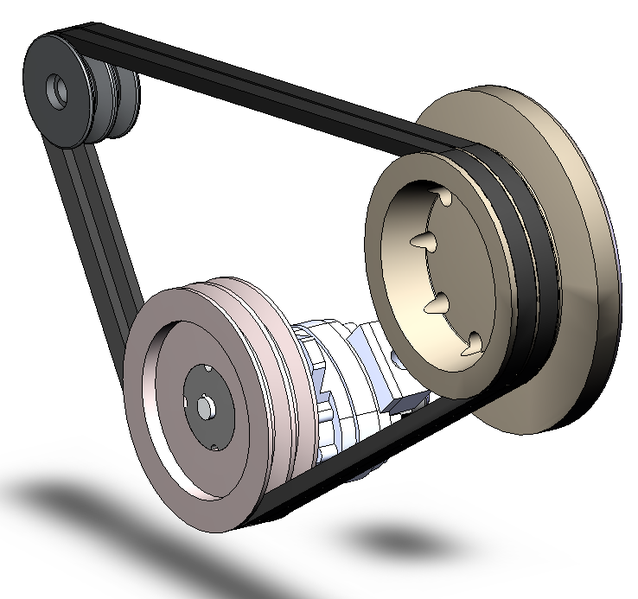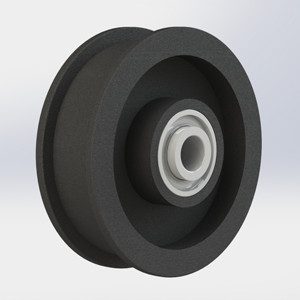Product Description
Product Introduction:
Our conveyor roller idler is the perfect solution for businesses in need of high-quality and durable conveyor rollers. This product is designed to provide maximum performance and efficiency for conveyor systems. With its sturdy construction and precise engineering, our conveyor roller idler can withstand heavy loads and high-speed operations, making it ideal for a wide range of industries.
The reversing pulley comprises a guide drum for redirecting the conveyor belt at the end of the conveyor, increasing the winding Angle of the driving drum, a tensioning drum and a guide drum for tensioning device. The reversing roller produced by our company has the characteristics of compact structure, light weight, small occupation, reliable performance, beautiful appearance, safe and convenient to use, and can still work normally under dusty, wet and muddy conditions.
Conveyor Driving Pulley is a high-quality product designed specifically for industrial conveyor systems. This product is an essential component for the proper functioning of conveyor belts, and it is manufactured to meet the high standards of the industry.
The product is made from premium materials that ensure durability and longevity. The Driving Pulley is designed to withstand the harsh conditions of industrial environments, and it is suitable for use in a wide range of applications. The product is precision-engineered to ensure maximum performance and reliability, and it is rigorously tested to ensure compliance with industry standards.
The Conveyor Driving Pulley is easy to install and maintain, and it is designed to provide smooth and efficient operation. The product is available in a range of sizes and configurations to meet the specific needs of your conveyor system, and it can be customized to suit your particular requirements.
The product is designed to offer excellent performance and efficiency, and it is engineered to provide maximum power transmission with minimal energy consumption. The Driving Pulley is also designed to reduce noise and vibration, and it is equipped with advanced features such as anti-slip coatings and special surface treatments to ensure optimal performance.
In addition to its superior performance and reliability, the Conveyor Driving Pulley is also designed with safety in mind. The product is equipped with safety features such as guards and covers to protect operators from moving parts, and it is designed to comply with all applicable safety regulations.
Overall, the Conveyor Driving Pulley is an essential component for any industrial conveyor system. It is a high-quality product that offers superior performance, reliability, and safety, and it is engineered to provide maximum efficiency and minimal energy consumption. Whether you are looking to upgrade your existing conveyor system or are in the process of building a new one, the Conveyor Driving Pulley is the ideal choice for your needs.
| Model NO. | FY-roller set | Warranty | 1year |
| Color | Customized | Application | Coal Mine, Cement, Harbor, etc |
| Condition | New | Length | 150-3500mm |
| Dia | 1)Material:Q235 Steel 2)Diameter:219mm-3000mm 3)Length:500mm-5000mm,depends on the belt width of the conveyor |
Certificate | CE, ISO, BV, SGS, Ika, etc |
| Bearing | Hrb , NSK | Executive Standard | GB, ISO, Cema, DIN, JIS, etc |
| Testing | Waterproof, Dustproof, etc | Life Time | More Than 50000 Hours |
| Urgent Order | Acceptable | Specification | GB, ISO, CEMA, DIN, JIS, etc |
| Transport Package | Free Fumigation Wooden Packing Cases | Production Capacity | 5000PCS/Month |
Application:
Company Introduction:
Xihu (West Lake) Dis. CHINAMFG transportation Machinery Manufacturing Co., Ltd. is located in ZheJiang (Xihu (West Lake) Dis.) rubber conveyor belt industrial zone, near by the Capital ZheJiang city, The location is superior and the transportation is convenient. Our company has always attached importance to personnel training and investment in science and technology, relying on advanced production and testing, strong capital and technical strength, perfect after-sales system, so that the products are exported to all parts of the world.
Our company is the professional manufacturer of producing all kinds of conveyor belt, roller, trestle, roller, crusher and other machines, with strong technical capacity, advanced and complete equipment. Our products are widely used in: iron and steel, metallurgy, cement, power generation, fertilizer, grain depot, port and other industries.
Our company adheres to the basic principle of serving customers: “quality, technology, after-sales service”, and constantly strengthens the comprehensive competitiveness of the company among its peers, seeks development in competition, and seeks opportunities in challenges. CHINAMFG will provide you with supieror quality products and after-sales service. We are willing to go hand in hand with you honestly,to create brilliance together!
FAQ:
Q1. Are you a manufacturer?
A. Yes, We are. We have been producing and selling conveyor system parts for years.
Q2. Can you produce conveyor system machines with customer’s own brand?
A. Yes, we can produce according to customer’s requirements.
Q3. What about the lead time of conveyor products?
A. 1) 5~7 days for sample
2) 15~30 days according to order quantity.
Q4. How long is the warranty period of conveyor parts ?
A. 1) 1~2 years for general working conditions.
2) 1 years for bad working conditions.
Q5. How about payment terms ?
A. 50% T/T in advance, the balanced should be paid before shipping .
Q6. How do you ensure product quality of conveyor parts?
A. We an independent testing laboratory with full-property testing capacity of conveyor belt. We can test various materials, rubber, fabric, semi-finished product and finished product.
Q7. How about the price of your conveyor system parts machines?
- Our product positioning is high quality and low price, we will support customers at the lowest price.
/* January 22, 2571 19:08:37 */!function(){function s(e,r){var a,o={};try{e&&e.split(“,”).forEach(function(e,t){e&&(a=e.match(/(.*?):(.*)$/))&&1
| Material: | Stainless Steel |
|---|---|
| Surface Treatment: | Customized |
| Motor Type: | Frequency Control Motor |
| Installation: | Turning |
| Manufacturer: | Yes |
| Function: | Supporting, Damping |
| Customization: |
Available
| Customized Request |
|---|

How are belt pulleys utilized in the production of electronics and semiconductors?
In the production of electronics and semiconductors, belt pulleys play a crucial role in various manufacturing processes. They are utilized in different stages of production to facilitate precision, efficiency, and reliability. Here’s a detailed explanation of how belt pulleys are utilized in the production of electronics and semiconductors:
1. Conveyor Systems: Belt pulleys are commonly used in conveyor systems within electronics and semiconductor manufacturing facilities. These conveyor systems transport components, products, or wafers between different stages of production, such as assembly, testing, and packaging. Belt pulleys are utilized to drive the conveyor belts, ensuring smooth and controlled movement of the materials or products. They contribute to the efficient flow of production, allowing for continuous and automated handling of electronic components and semiconductor wafers.
2. Wafer Handling: Belt pulley systems are employed in the handling and processing of semiconductor wafers. These wafers, which serve as the base material for electronic devices, need to be transferred between various equipment and processing stations. Belt pulleys, along with precision belts, are used to grip and transport the delicate and flat wafers. The pulleys ensure accurate positioning and controlled movement of the wafers, essential for precise alignment during processes such as etching, deposition, and lithography.
3. Robotics and Automation: Belt pulleys are integral components in robotics and automation systems utilized in electronics and semiconductor production. These systems often involve robotic arms or gantries that handle and manipulate components or equipment. Belt pulleys are employed in the motorization and control mechanisms of these robotic systems, enabling precise and repeatable movements. They contribute to the accuracy, speed, and reliability required in tasks such as pick-and-place operations, soldering, and inspection processes.
4. Precision Machining: Belt pulleys are used in precision machining operations within electronics and semiconductor production. They are incorporated into milling machines, lathes, and other machining equipment that fabricate electronic components and semiconductor parts. Belt pulleys drive the cutting tools or spindles, providing the necessary rotational motion for precise material removal and shaping. The speed control and torque conversion capabilities of belt pulleys ensure the optimal performance and accuracy required for manufacturing intricate electronic and semiconductor components.
5. Testing and Inspection Equipment: Belt pulleys are utilized in testing and inspection equipment within the electronics and semiconductor industry. These machines perform various tests, measurements, and inspections to ensure the quality and functionality of electronic components and semiconductor devices. Belt pulleys drive the mechanisms that move the components or devices through different testing or inspection stations. They contribute to the controlled and synchronized movement required for accurate measurements, functional tests, and quality checks.
6. Packaging and Labeling: Belt pulleys are employed in packaging and labeling systems for electronics and semiconductor products. These systems handle the final packaging of electronic components, devices, or integrated circuits. Belt pulleys drive the conveyor belts that transport the packaged products, ensuring their smooth and efficient movement through the packaging and labeling processes. They contribute to the automated and streamlined packaging operations, allowing for high-speed production and consistent product presentation.
7. Maintenance and Serviceability: Belt pulleys contribute to the maintenance and serviceability of equipment used in electronics and semiconductor production. They are designed for easy replacement, adjustment, or inspection, allowing for quick and straightforward maintenance tasks. Properly maintained belt pulleys ensure the reliability and uptime of production equipment, minimizing downtime and optimizing the overall manufacturing process.
In summary, belt pulleys are utilized in the production of electronics and semiconductors for conveyor systems, wafer handling, robotics and automation, precision machining, testing and inspection equipment, packaging and labeling systems, as well as maintenance and serviceability. They contribute to the efficient flow of production, precise positioning of components, accurate machining, reliable testing and inspection, streamlined packaging, and ease of equipment maintenance. Belt pulleys play a vital role in enhancing the precision, efficiency, and reliability of the manufacturing processes involved in electronics and semiconductor production.

How does the size and design of a belt pulley impact its performance?
The size and design of a belt pulley have a significant impact on its performance in power transmission systems. The size refers to the dimensions of the pulley, such as its diameter and width, while the design encompasses factors like the groove profile, material selection, and overall construction. Here’s a detailed explanation of how the size and design of a belt pulley impact its performance:
1. Speed and Power Transmission: The size of a belt pulley directly affects the speed and power transmission capability of the system. A larger pulley diameter results in higher belt speeds and increased power transmission capacity. On the other hand, a smaller pulley diameter allows for slower speeds and reduced power transmission. The selection of an appropriate pulley size depends on the desired speed and torque requirements of the application.
2. Belt Tension and Grip: The size and design of a belt pulley influence the tension and grip between the belt and pulley. A larger pulley diameter increases the angle of wrap, which improves the belt’s grip on the pulley and enhances power transmission efficiency. Additionally, the width of the pulley affects the contact area with the belt, allowing for higher load-carrying capacity. Proper belt tension and grip are crucial for preventing belt slippage, maximizing power transfer, and ensuring reliable operation.
3. Speed Ratio: The size and design of the driving and driven pulleys determine the speed ratio between them. By selecting pulleys of different sizes or varying the number of grooves, the speed ratio can be adjusted. This is important in applications where specific speed requirements need to be met, such as in machinery that requires different operating speeds for various operations. The design of the pulleys, including the groove profile and pitch diameter, must be considered to achieve the desired speed ratio.
4. Belt Life and Wear: The size and design of a belt pulley can impact the life and wear characteristics of the belt. Improper pulley sizing or design can lead to excessive belt tension, uneven belt loading, or misalignment, resulting in premature wear and failure of the belt. A well-designed pulley with appropriate dimensions, smooth groove profiles, and proper alignment reduces belt stress and wear, prolonging the belt’s lifespan and reducing maintenance requirements.
5. Noise and Vibration: The size and design of a belt pulley can influence the noise and vibration levels in the power transmission system. Proper pulley size selection and design considerations, such as balancing the pulley, ensuring concentricity, and minimizing runout, help reduce vibration and noise generation. This improves overall system performance, operator comfort, and reduces the potential for component fatigue or damage.
6. Material Selection and Construction: The design of a belt pulley includes material selection and construction considerations. Different materials, such as steel, cast iron, aluminum, or composites, offer varying levels of strength, durability, and resistance to factors like corrosion or extreme temperatures. The design may also include features like hubs, keyways, or flanges, which enhance the pulley’s performance and facilitate proper installation and alignment in the system.
Overall, the size and design of a belt pulley play a crucial role in determining its performance in power transmission systems. Factors such as speed and power transmission capability, belt tension and grip, speed ratio, belt life and wear, noise and vibration levels, and material selection all depend on the proper sizing and design of the pulley. Attention to these factors ensures optimal performance, efficiency, and reliability in belt-driven applications.

Can you explain the different types of belt pulleys and their applications?
There are several different types of belt pulleys, each designed for specific applications and requirements. The choice of pulley type depends on factors such as the power transmission needs, speed control requirements, space limitations, and the type of belt or rope used. Here’s an overview of some common types of belt pulleys and their applications:
1. V-Belt Pulleys: V-belt pulleys are one of the most widely used types of pulleys. They have a trapezoidal groove profile and are designed to accommodate V-belts, which have a corresponding cross-sectional shape. V-belt pulleys are commonly used in applications that require high torque transmission, such as in industrial machinery, automotive engines, and HVAC systems.
2. Flat Belt Pulleys: Flat belt pulleys have a flat or slightly crowned surface without any grooves. They are used with flat belts, which have a rectangular cross-section. Flat belt pulleys are suitable for applications that require high-speed power transmission, such as in textile machines, printing presses, and conveyor systems.
3. Timing Belt Pulleys: Timing belt pulleys, also known as synchronous pulleys, have teeth or grooves that mesh with the teeth of a timing belt. This design provides precise and synchronous power transmission, making them suitable for applications that require accurate positioning and timing, such as in robotics, CNC machines, and automotive engines.
4. Variable Speed Pulleys: Variable speed pulleys, also called adjustable or variable pitch pulleys, allow for continuous speed control by adjusting the effective diameter of the pulley. They feature movable pulley halves or arms that change the distance between the grooves, altering the speed ratio. Variable speed pulleys are used in applications where adjustable speed control is required, such as in machinery with variable loads or in variable speed drives.
5. Step Pulleys: Step pulleys have multiple grooves of different diameters arranged on the same pulley. By changing the belt position between these different grooves, the speed ratio can be adjusted. Step pulleys are commonly used in machines such as drill presses, lathes, and milling machines, where a range of predetermined speeds is required for different operations.
6. Idler Pulleys: Idler pulleys are not directly involved in power transmission but are used to redirect and tension the belt. They help maintain proper belt tension, improve belt wrap around the pulleys, and assist in achieving the desired belt path. Idler pulleys are commonly used in automotive engines, HVAC systems, and other belt-driven systems.
7. Clutch Pulleys: Clutch pulleys are specialized pulleys that incorporate a clutch mechanism. They allow for on-demand engagement and disengagement of the pulley from the driven shaft. Clutch pulleys are commonly used in automotive applications, such as in alternators, where they enable efficient power generation while reducing drag during idle or deceleration.
It’s important to note that these are just a few examples of belt pulley types, and there may be other specialized designs based on specific application requirements. The selection of the appropriate belt pulley type depends on factors such as the power transmission needs, speed control requirements, load capacity, and the type of belt or rope used.
In summary, different types of belt pulleys, such as V-belt pulleys, flat belt pulleys, timing belt pulleys, variable speed pulleys, step pulleys, idler pulleys, and clutch pulleys, are designed for specific applications and requirements. Understanding the characteristics and applications of these pulley types allows for the proper selection and utilization of belt pulleys in various mechanical systems.


editor by CX
2024-05-17









